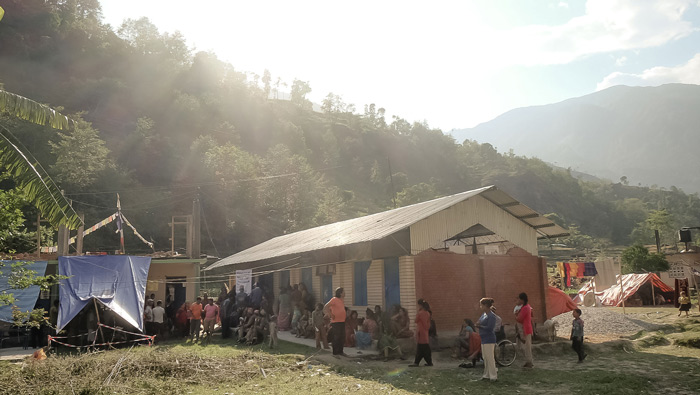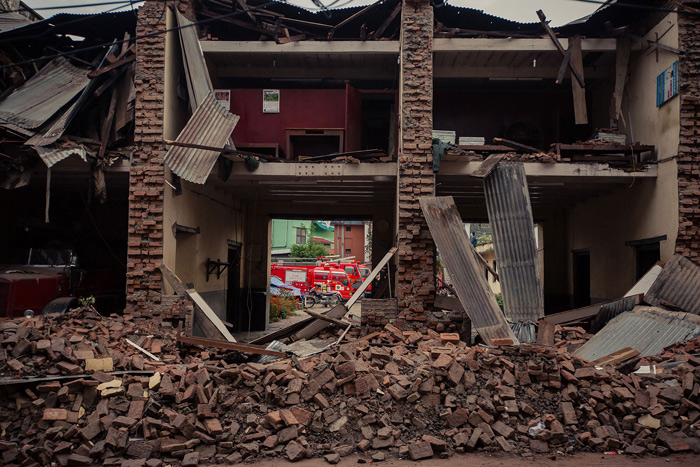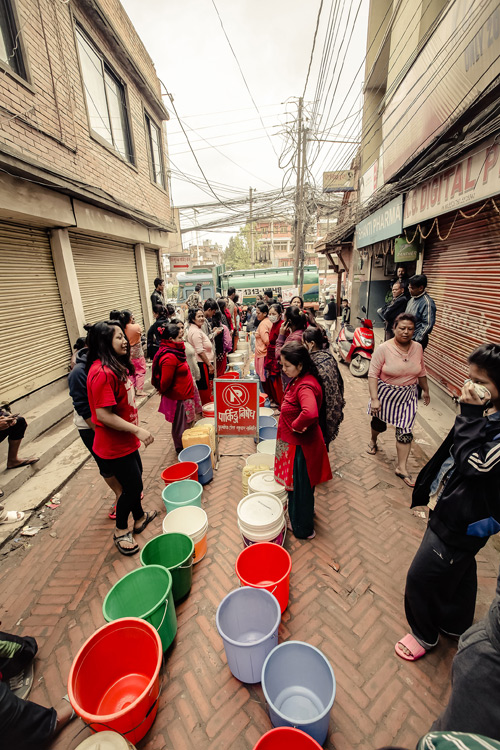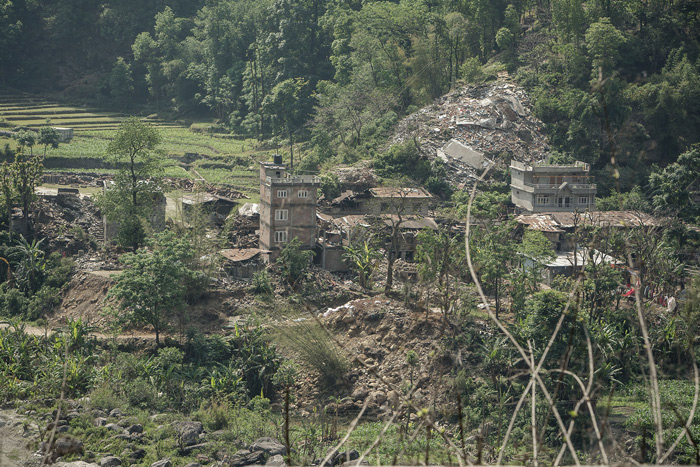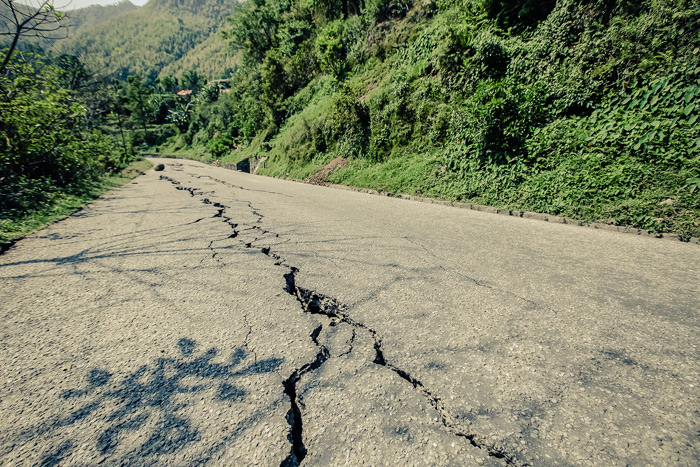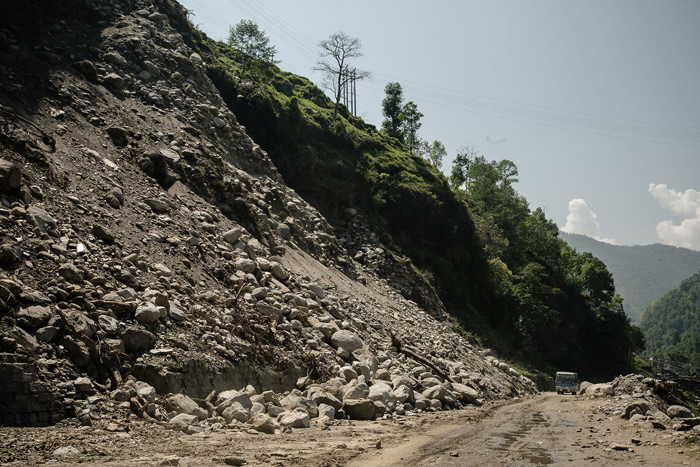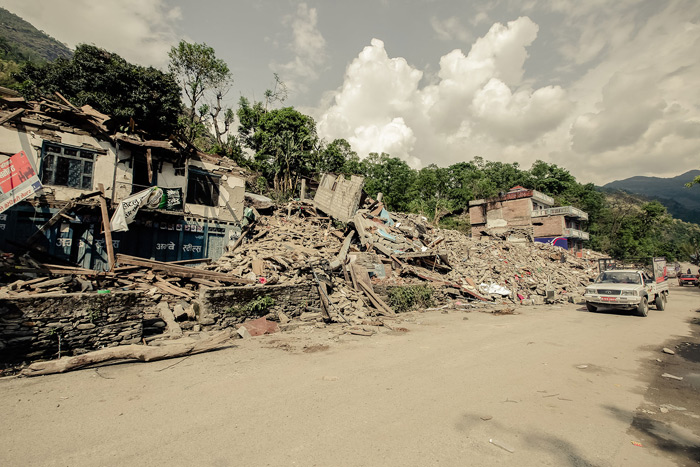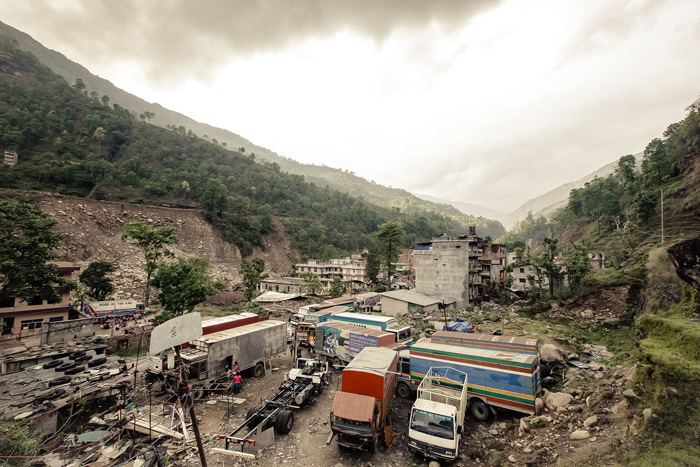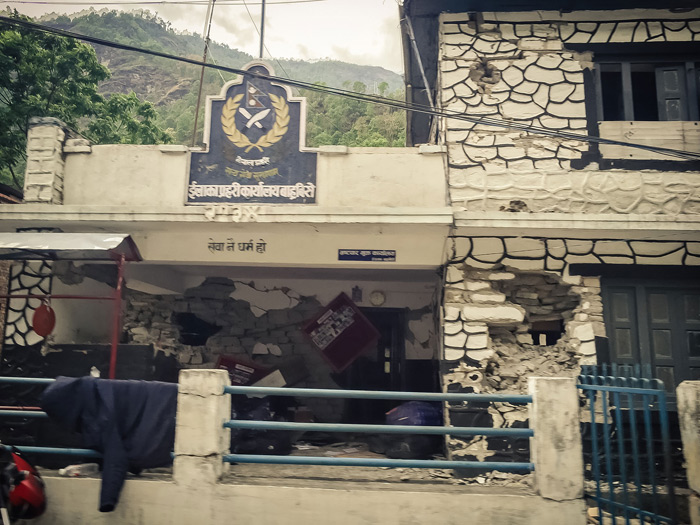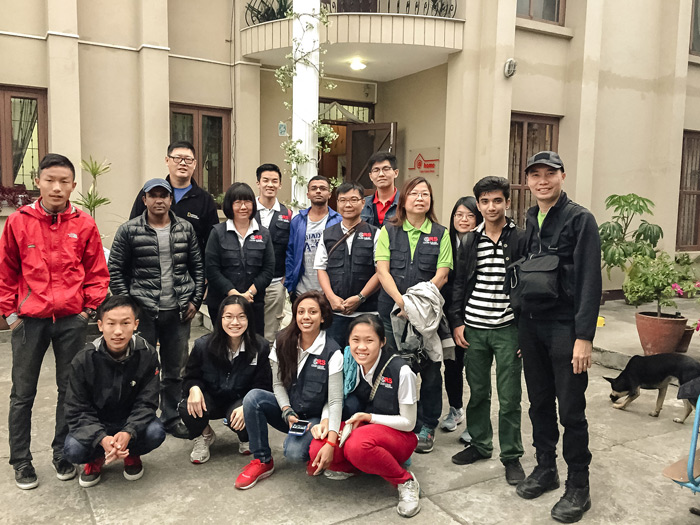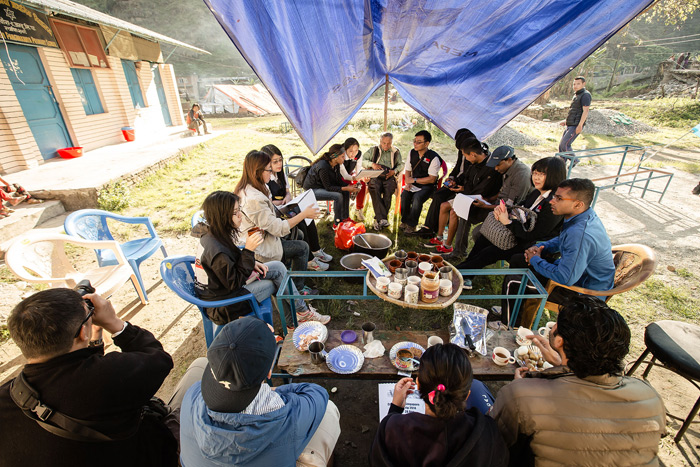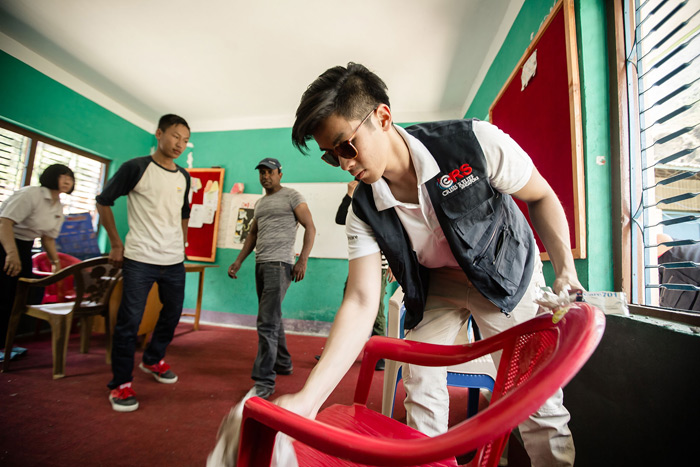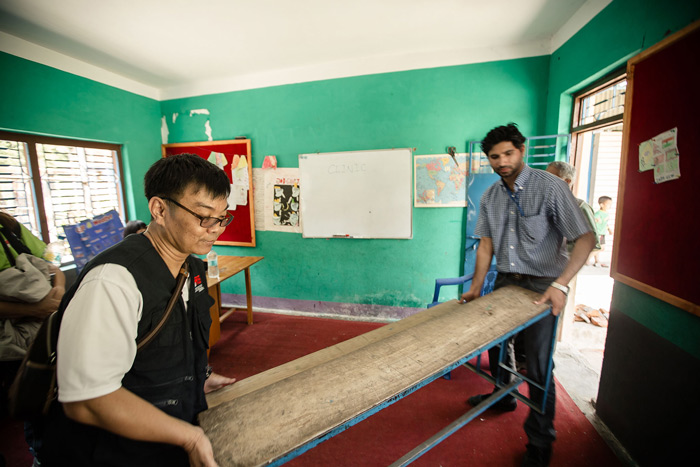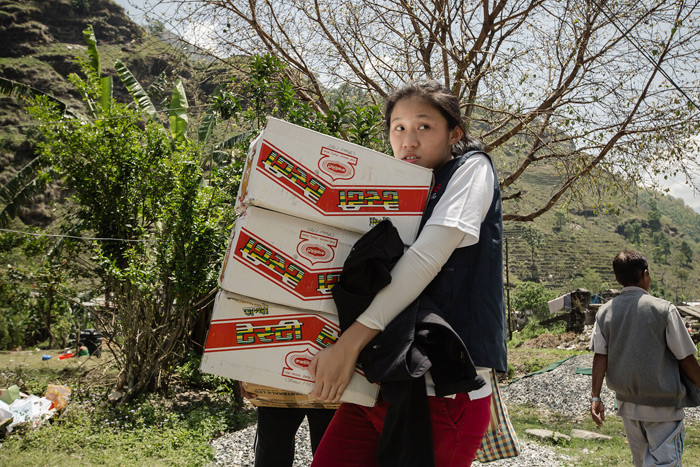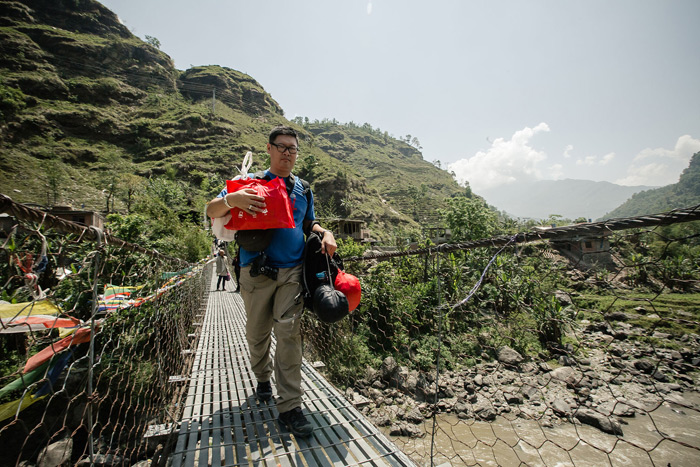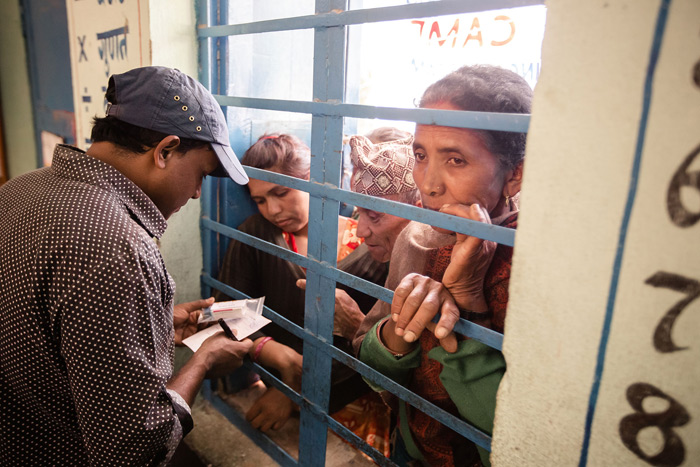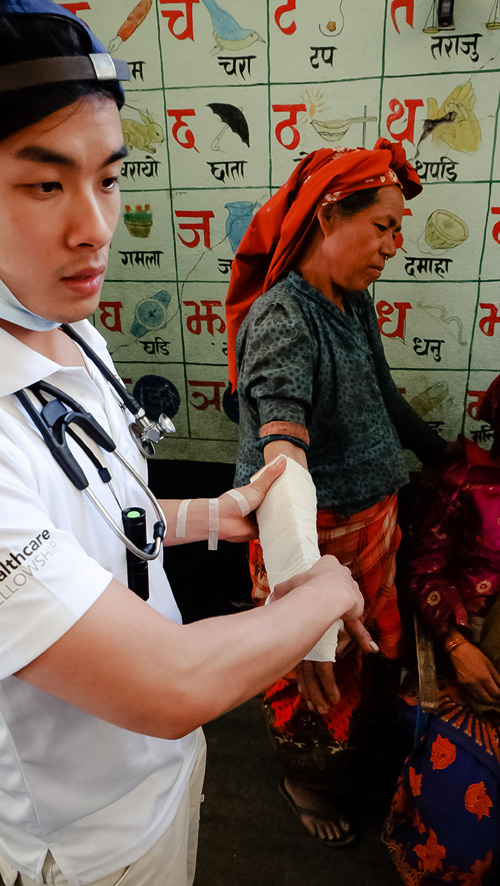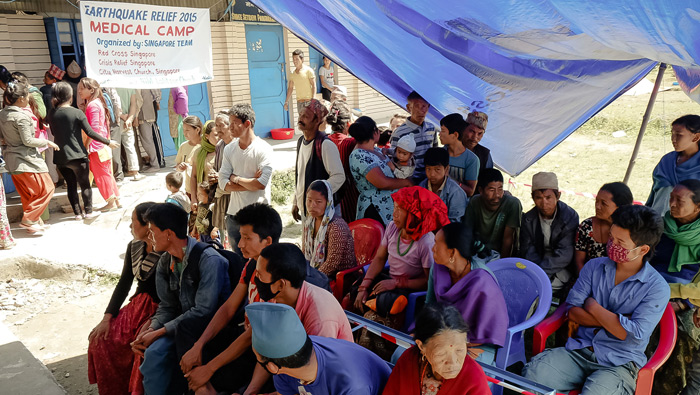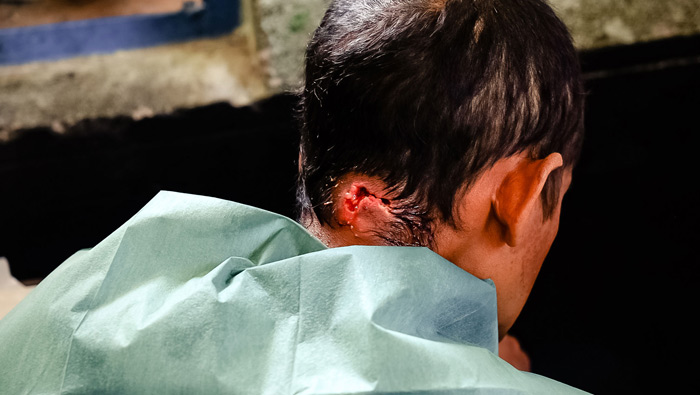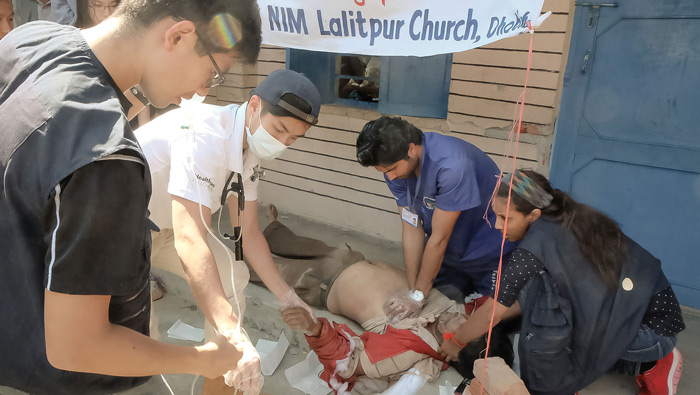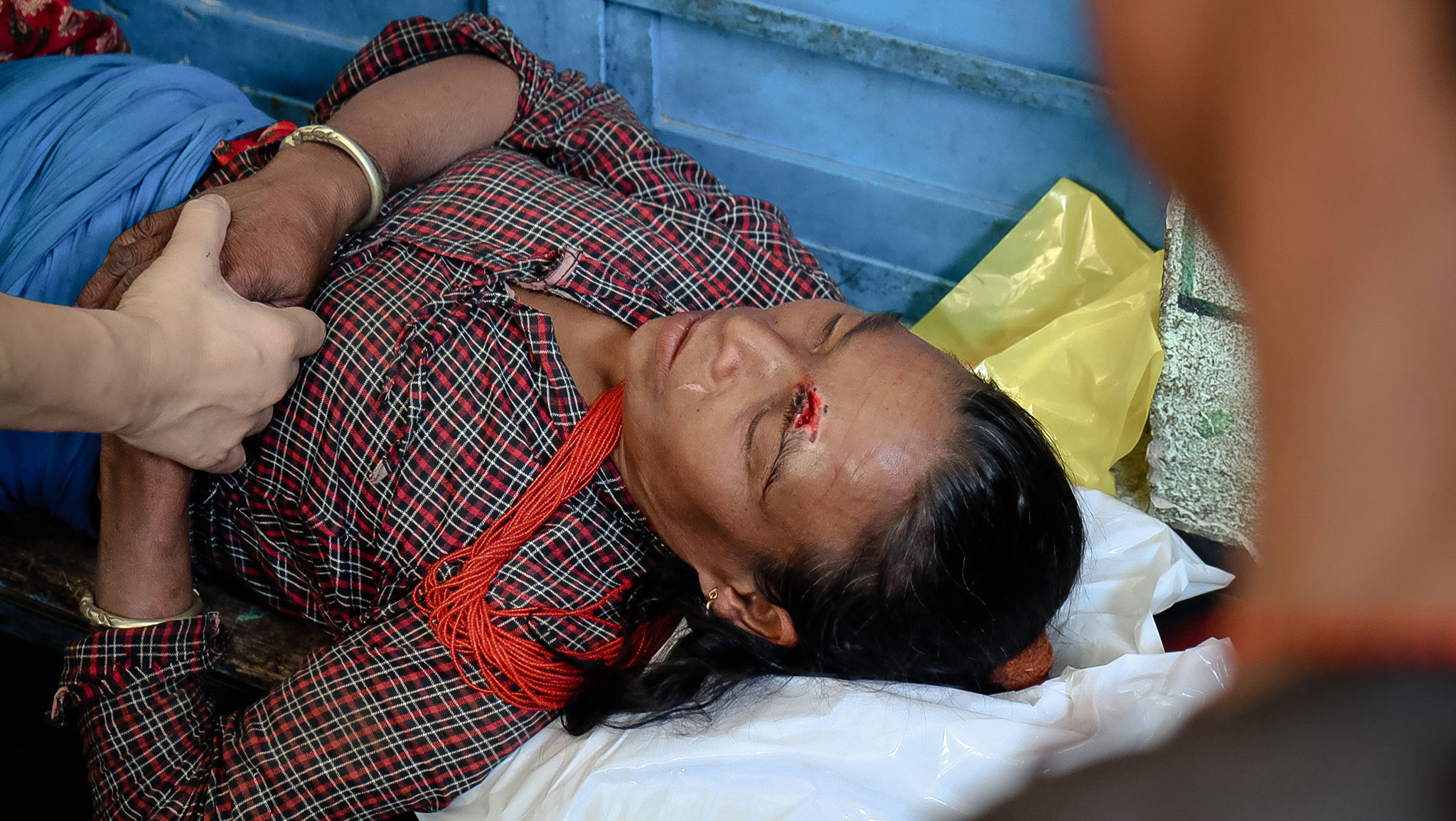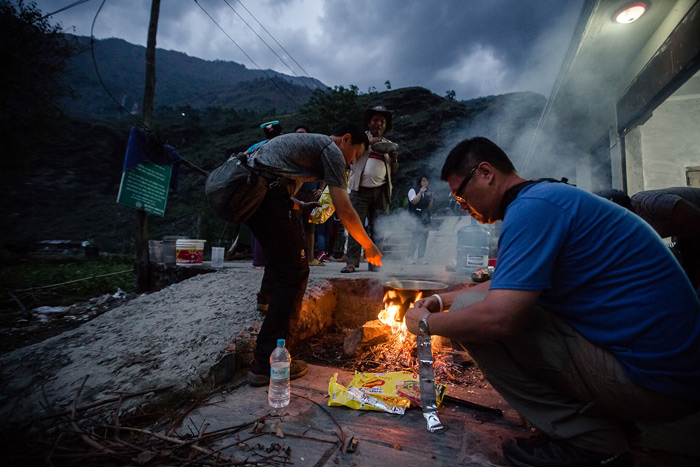Two of six medical teams have gone to Nepal to bring mobile aid to victims in the Sindhupalchowk and Gorkha Districts, the two areas worst hit by Nepal Earthquake.
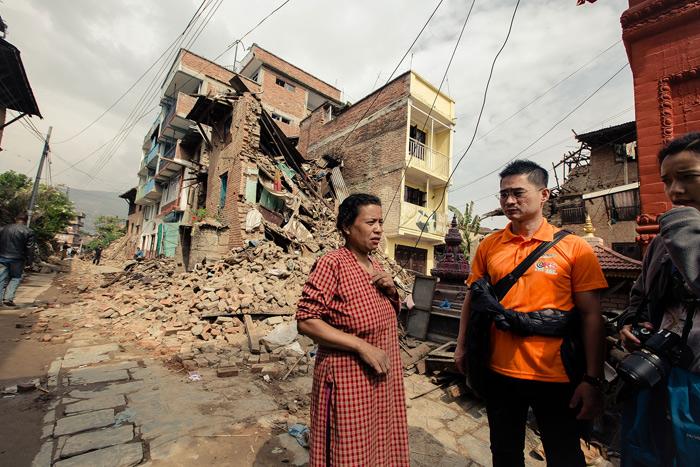
CHC pastor Kenneth Sim (in orange) listens as a Nepalese quake victim describes how she lost her house in the quake. CN PHOTOS: Albert Soh & Michael Chan
On April 25, 2015, Nepal experiencd an earthquake measuring 7.8 on the Richter scale. Its epicenter lay in Barpak Village in the Gorkha district, some 80km northwest of the capital of Kathmandu. It was the most powerful earthquake to befall Nepal for over 80 years. The quake also affected adjoining area in India, China and Bangladesh. The quake also caused an avalanche on Mount Everest, killing 19 people.
The quake demolished whole villages, collapsing buildings and killing thousands—the current death toll stands at over 7,000. Over 14,000 are injured and an estimated 2.8 million displaced from their homes.
City Harvest Church has a history of working with relief organizations to send medical aid teams into disaster areas, starting with Aceh, Indonesia after the deadly Asian Tsunami of 2004. Its last disaster relief effort was to areas in the Philippines that were affected by Typhoon Haiyan, which struck in November 2013.
“How we got involved this time is, a family who had been living in Nepal but who are now back in Singapore, attending our church, contacted me to ask if CHC can send help to Nepal as the situation is really bad,” recalled Kenneth Sim, 44, a pastor with CHC and also former field director for CityCare.
On April 28, the church sent a team of three—Sim, Michael Chan, staff photographer and Roy Tng, a church member— to Lalitpur City, Nepal to assess the damage and the medical needs to be met. CHC is partnering with long-time collaborator Crisis Relief Singapore on this relief effort.
The advance team arrived to a landscape of devastation: massive landslides had leveled building, destroyed homes and roads, causing blockages that made traveling a challenge. However, the capital of Kathmandu, which the team headed to first, remained relatively unscathed.
There, Sim met up with Rajendra Rongong, pastor of Nepali Isai Mandali (NIM) Lalitpur Church, and together they approached the city government for permission to set up mobile medical clinics in villages that aid had not reached yet.
“As the advance team, it was our job to determine which area had the greatest need,” explained Chan, who has been present at many of the disaster sites that CHC has brought aid to. “The real difficulty was trying to pinpoint where to set up the clinic. In Pastor Rongong’s church there was a gentleman we called Elder Dil Thapa, whose daughter and son-in-law are doctors. They became part of our recce team.”
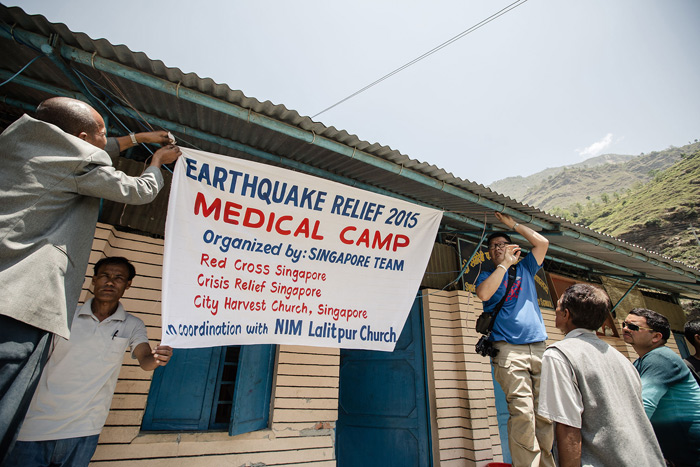
Getting a helping hand from the friendly villagers. The team from Red Cross was deployed to another village.
On April 29, Chan and Tng, with Elder Thapa and the two Nepalese doctors set out for Sindupalchowk District—one of the worst-hit areas—and found a village, Bahrabise, to set up a mobile clinic. “On the road to Bahrabise you could smell decomposition in the air, probably from the dead bodies trapped under the rubble. Bahrabise is a densely-populated town that lies in a valley—most of the houses had collapsed, even the police station was damaged. But we located a single building in a compound that we could set up in. We went back to Kathmandu to prepare the supplies and sort out the paperwork. The first medical team from Singapore arrived on May 1.”
However, on May 2 when the team, comprising two doctors, two nurses and seven relief workers apart from Chan and Tng, arrived back in Bahrabise, they discovered that a Japanese relief team had already set up a mobile clinic. As rules were that no two relief teams can operate at the same place simultaneously, the Singapore-Nepalese team decided to head elsewhere, but had to wait for the approval papers to bring aid elsewhere.
“We spoke to the locals, who suggested we go deeper inland, about three kilometers, to a village called Jambu. Once we got the approval, we went there—the locale was protected by a river and wasn’t surrounded by steep hill, which was a relief! The moment we set up there, people started coming for aid.”
The team saw a total of 106 patients that first day before they retired. The women in the team stayed in a guesthouse, while the men slept in a school classroom in their sleeping bags.
“There were aftershocks throughout our trip,” said Chan. “Our most ‘memorable’ was probably that night in Jambu. At 3.30am, there was a big shock. All the men in the classroom jumped up and ran out into the open. It was so fast—I think we were all outside in four seconds. I’m glad we were all alert. I had slept with my shoes on with my camera and camera bag strapped around me, so I had all my equipment when I ran out!” Chan explained that once while on a disaster relief trip to Haiti, during an aftershock, he ran out of the building without his shoes or his camera. It was a lesson he never forgot.
The second day, May 3, the mobile clinic buzzed with activity. The team saw 355 cases that day. “We saw mostly injury cases, like sprains, fractures, cuts,” said Chan. “There was a lady who had been rescued after being trapped for three days under rubble. She was severely dehydrated so we put her on a IV drip. Eventually she felt well enough to return home with her relative.”
Although the injuries did not seem as severe as what the team had seen in places like Haiti, where maggots had grown in flesh wounds and amputation was needed, or in the Philippines after Typhoon Haiyan, where children were coming to the clinic with nails embedded in their feet, the Nepal disaster saw its fair share of tragedies.
Sim, 44, told City News that there was an unfortunate case that the clinic saw on May 3. There was an aftershock that caused panic in the village. The people mobbed a bus and some fell off the bus. One man collapsed and was brought to the clinic. In spite of all the doctors’ and nurses’ efforts to resuscitate him, the man died.
The first medical team returned to Singapore on May 6, the day that Team Two departed. Team Two comprises three doctors, four nurses and three volunteers. They are setting up a mobile clinic at Suarpani in Gorkha, another district that has been badly-hit by the earthquake. Gorkha is located in a remote area that is hard to reach. “The team members will have to trek two to three hours to reach Gorkha,” said Sim. “But they will set up and spend three days there—May 7 to 9—providing medical aid to the people.”
CHC plans to send a total of five medical teams to Nepal in the month of May (see dates in box). Apart from church members, the teams comprise medical personnel from local hospitals. City Harvest Church members are encouraged to volunteer as relief workers, or to donate in support of these efforts.
To volunteer for one of these trips, please contact isaiahkuan@chc.org.sg. To donate, please click here and indicate amount under “Others – Disaster Relief (Nepal)”. This is a restricted fund for disaster relief efforts only.
CHC Nepal Medical Relief Schedule
Advance team: April 28-May 4
Team One: May 1-6
Team Two: May 6-10
Team Three: May 9-13
Team Four: May 13-17
Team Five: May 16-20

